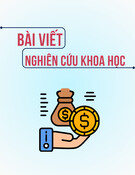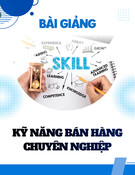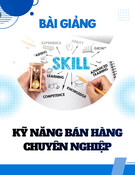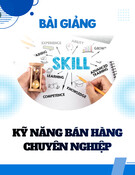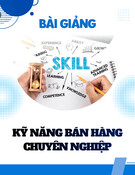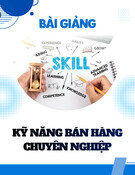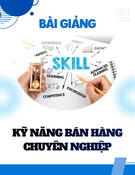
http://www.iaeme.com/IJM/index.asp 52 editor@iaeme.com
International Journal of Management (IJM)
Volume 10, Issue 2, March-April 2019, pp. 52-62, Article ID: IJM_10_02_006
Available online at http://www.iaeme.com/ijm/issues.asp?JType=IJM&VType=10&IType=2
Journal Impact Factor (2019): 9.6780 (Calculated by GISI) www.jifactor.com
ISSN Print: 0976-6502 and ISSN Online: 0976-6510
© IAEME Publication
AN EMPIRICAL STUDY OF EXTERNALITY
AND CUSTOMER SATISFACTION
*Claire Y.T. Ho
Ph.D. Student, Department of Business Administration, Nanhua University, Taiwan
Miao-Shen Chen
Chair Professor, Department of Business Administration, Nanhua University, Taiwan
*Correspondence Author Email: claire@mail.dyu.edu.tw
ABSTRACT
In general, customer satisfaction is derived from the quality of product. Hundreds
of studies examine the relationship between the performance of product attributes and
customer satisfaction. Instead of conducting an analysis on the influence of attribute
performances on customer satisfaction, this study pays close attention to the influences
of externality on customer satisfaction in the case of the tourism industry. We examine
the externality coming from companion’s behavior on tourist satisfaction in tour
groups. The regression results show that companion’s behavior significantly influence
tourist satisfaction, no matter the satisfaction is measured from the aspect of tour
schedule or tour escort. By encouraging or discouraging some companions customer
can enhance tourist satisfaction. In addition, gender and companions will cause
different regression results. This reminds us to take consideration of the individual
difference when taking actions to enhance satisfaction. These results imply customer
satisfaction is not only determined by the performance of product attributes, but also
depends on externality. Controlling the influence of externality is an alternative to
enhance satisfaction.
Keywords: customer satisfaction, tourism, externality, companion’s behavior, quality
management.
Cite this Article: Claire Y.T. Ho and Miao-Shen Chen, An Empirical Study of
Externality and Customer Satisfaction, International Journal of Management, 10 (2),
2019, pp. 52-62.
http://www.iaeme.com/IJM/issues.asp?JType=IJM&VType=10&IType=2
1. INTRODUCTION
Customer satisfaction is the driver to maintain competitive advantage for business (Tsai, Chen,
Chan, and Lin, 2011). It is also the most efficient and least expensive source of market
communication which plays the key role in achieving business excellence (Dubrovski, 2001).
Lots of empirical work show that customer satisfaction contributes to repurchase, cross selling,
reduced price sensitivity, and positive word-of-month (Matzler and Stahl, 2000; Matzler et al.,
2004). And the positive relationship between customer satisfaction and

Claire Y.T. Ho and Miao-Shen Chen
http://www.iaeme.com/IJM/index.asp 53 editor@iaeme.com
profitability/shareholder value have been proven by many researchers (Anderson et al., 1994;
Oliver, 2014; Stahl et al., 2003; Matzler et al., 2004; Eklof et al, 2018). Though, lots researchers
have studied customer satisfaction, we cannot stress its importance too much. In this area, some
researchers propose customer satisfaction is determined by the performance of product attribute
(Wall and Berry, 2007; Zhang, Jiang and Li, 2013). Instead, this study examines the influences
of externality, non-product attribute, on customer satisfaction in the case of tourism industry.
Just like heaps of research on customer satisfaction which propose customer satisfaction
depends on the performance of product attributes (Bitner, 1990; Chang, 2000; Andaleeb and
Conway, 2006; Wall and Berry, 2007; Zhang, Jiang and Li, 2013), tourist satisfaction is also
determined by the product quality. Basically, the research on measuring the overall levels of
tourist satisfaction can be classified into two streams. The first one focuses on measuring the
levels of tourists’ satisfaction with their experiences in particular destination and satisfaction
with specific attributes at service encounter level, such as in a hotel or at an attraction (Foster,
2000; Haber and Lerner, 1999; Maddox, 1985; Oh, 1999: Ryan, 1994; Yu and Goulden, 2006).
The other stream of studies on tourist’s satisfaction proposes tourism satisfaction is determined
by a series of service encounters as experienced in a hotel, in a travel agency or in a tourist
attraction (Macintosh, 2002; LeBlanc, 1992). Both of these two streams advocate tourist
satisfaction depends on the performance of product attributes.
An externality is cost or benefit that affects someone other than the consumers or the
suppliers of a good (Bade and Parkin, 2015). Previous works focus on the impacts of externality
on allocative efficiency. The discussion about externality and customer satisfaction is very rare.
Nowadays, group-tour is the most common way of traveling, tourists travel with companions.
They visit the scenic spots together, watch shows at the same time, enjoying a buffet/delicious
food in the same dining saloon, etc. In traveling, no one will expect the one next you comment
the show without a stop in the opera or enjoy buffet with the one wrest lots of foods like a wolf.
Hence, it’s very possible that companion’s behavior become an externality for others. In order
to fill this gap between externality and customer satisfaction, this paper examines the impacts
of companion’s behavior on satisfaction.
The results show that companion’s behavior significantly influence customer satisfaction,
no matter the satisfaction is measured from the aspect of tour schedule or tour escort. The results
indicate that egocentric/discontent behavior is negative with satisfaction, and well social
intercourse, unhurried manner and some crude behavior, for example blue joke, will reinforce
satisfactions. In addition, we classify the sample by gender, companion and age and find that
gender and companion make regression results a minor difference. This point reminds us to
take consideration of the individual difference when taking actions to enhance satisfaction.
The contributions of this paper are multi-folded. In most cases, researchers investigate
tourist’s satisfaction from individual experience about hotels, restaurants, scenic spots, and so
on, without taking account of externality such as companion’s behavior. We highlight the
importance of externality on customer satisfaction. Customer satisfaction can be improved by
controlling/taking advantage of externality, without enhancing the performance of product
attributes. In addition, the results can be applied to other service industries which they serve
customers in the same place or at the same time, for example, cinema, restaurants, and hotels
and so on.
Except this introduction section, Section 2 is about literature review and hypothesis
development, section 3 makes statements about questionnaire design and data descriptions. And
section 4 introduces the empirical analysis and results include further investigation. And the
final section proposes the managerial implication and conclusion.

An Empirical Study of Externality and Customer Satisfaction
http://www.iaeme.com/IJM/index.asp 54 editor@iaeme.com
2. LITERATURE REVIEW AND HYPOTHESIS DEVELOPMENT
Customer satisfaction has been studied by many researchers as well as marketing professorial.
Howard and Sheth (1969) and Cardozo (1965) are pioneering works which discuss customer
satisfaction. Hunt (1977) conceptualizes customer satisfaction as an evaluation of emotion. It
reflects the degree of positive feelings when having or using a service. Hartman (1973)
proposed a customer satisfaction concept which consists of three dimensions: the cognitive
dimension, the affective dimension and systemic dimension. The cognitive dimension discusses
the service experience, the affective dimension refers to the customer’s psychological reaction
to the service performance, and the systemic dimension describes the difference between the
expected and the received services. Dofrman (1979) suggest that satisfaction is correlated with
a customer's preference, expectations, perceptions, and motives.
The argument that customer satisfaction is determined by the performance of the product
attribute is widely accepted (Bitner, 1990; Chang, 2000; Andaleeb and Conway, 2006; Wall
and Berry, 2007; Zhang, Jiang and Li, 2013). For example, Zhang, Jiang and Li (2013)
concludes earlier research and propose food taste, physical environment, and employee service
is vital attributes for explaining diner’s satisfaction. Basing on this argument, customer
satisfaction is affected by customer’s post-purchase assessment of the service delivered and
comparison of customer’s expectations and the actual service experience (Hunt, 1997). If a
customer’s expectation is met or exceeded by the perceived performances, the customer will be
satisfied (Oliver, 1980). Therefore, the quality of service that matches or exceeds customer’s
expectation drives satisfactorily. Moutinho (1987), Pizam, Neumann, and Reichel (1978) and
Schofield (1999) studied the gap between pre-travel expectations and post-travel experience.
They believed tourists will be satisfied if tourism products and services match tourist’
expectation.
In tourism, early scholars conducted heaps of researches on customer satisfaction from the
perspectives of repurchase intention, quality management (Cardozo, 1965; Hartman, 1973;
Hunt, 1977). Some research focused on the product and service which studies of the influencing
factors on the satisfaction serving to improve the service quality of the hotels, and tourist sites
(LeBlanc, 1992; Ryan, 1994; Foster, 2000; Macintosh, 2002). Tourists of diverse cultural
background may value the same service delivery and service quality quite differently, some
scholars studied tourism satisfaction from the perspective of cross-cultural (Bowen and Clarke,
2002; Crotts and Erdmann, 2000; Rittichainuwat et al., 2002).
In recent years, increasingly scholars discuss the levels of tourists’ satisfaction with their
experiences destinations or at an attraction (Foster, 2000; Haber and Lerner, 1999; Maddox,
1985; Oh, 1999; Ryan, 1994; Yu and Goulden, 2006). Pearce (1989) defined destination as an
amalgam of products and services in one location that can draw visitors from beyond its spatial
confines. And Hu and Ritchie (1993) suggested the tourism destination as a package of tourism
facilities and services, which like any other consumer product. Kotler et al. (1996, 2003)
proposed six factors that affect the environment of the destination: demography, economy,
nature, technology, politics, and culture. Bowen (2001) suggested six attributes of the
influencing factors of tourist satisfaction: expectation, performance, disconfirmation,
attribution, emotion, and equity.
Some studies indicated that consumer’s interaction will affect consumer’s satisfaction
(McGrath and Otnes, 1995; Martin, 1996) even the intention of repurchase (Harris et al, 1997;
Parker and Ward, 2000) 。Harris, Baron and Ratcliffe (1995) reported that the quality of
consumers’ interaction is positively related to perception of service satisfaction. Hoffman and
Bateson (1997), Katz and Larson (1991) and Grove and Fisk (1997) also report the similar
conclusions about the consumers’ interaction and their satisfaction. Inappropriate public
behavior and speech will hamper others enjoying consumption. Ha and Jang (2010) examine

Claire Y.T. Ho and Miao-Shen Chen
http://www.iaeme.com/IJM/index.asp 55 editor@iaeme.com
the moderating effect of atmospherics on the relationship between employee service quality and
customer satisfaction. They found good employee service quality can be more effective in
enhancing customer satisfaction with a low perception of the atmospherics compared with a
higher perception. Companions’ behavior may influence the atmospherics in the process of
tourism. Hence, we can predict that tourist’s satisfaction will be affected by companions,
especially in the process of group-touring.
Therefore, this article proposes the following hypothesis:
H:The tourists’ satisfaction is related with companion’s behavior.
3. QUESTIONNAIRE DESIGN AND DATA DESCRIPTIONS
This paper takes advantage of questionnaire to collect data for empirical research. The survey
consisted of four sections. The first section comprised ten demographic and trips related
questions. These questions collect interviewee’s age, income, education, and experiences about
tourism. The second section was made up of 7 attributes of groups. For example, these questions
ask the tourism attraction, the length of tourism. The third section comprised 31 questions about
the externality, i.e. companion’ behavior. Martin (1996) listed seven categories of public speech
and behavior which may cause the public displeased or pleasant. There are about social
intercourse, apparel, egocentric, crudeness, violence, discontent and unhurried manner.
Following Martin (1996)’s framework, these 31 items are the proxies of externality.
Finally, the questionnaires investigate customer satisfaction. This part of questionnaires
consists of eight questions about customer satisfaction. Two dimensions of satisfaction are
measured here. First, we investigate the satisfaction from the aspect of the tour schedule
(Mehrabian and Russell, 1974). That is measuring the satisfaction in the service quality of the
hotels/restaurants and tourist sites. Second, we investigate the satisfaction about tour escort
(Conger et al., 2000). This part measures the satisfaction about tour escort’s capability, guiding
style, and so on.
These attributes were measured on a five-point scale, ranging from 1 (very dissatisfied) to
5 (very satisfied). The questionnaires are distributed to 548 tourists, who belonging to 30 tour
groups. And the number of valid questionnaires is 505; the rate of effective questionnaires is
92.1%. In our sample, the number of male and female are 235 (46.5% of interviewees) and 270
(53.5% of interviewees) respectively, more than 66% of interviewees are married (332) and
more than72% of interviewees graduated from college. Most of interviewees traveled with their
family (about 45.3% of interviewees), friends (about 26.9% of interviewees) and colleague
(21.8% of interviewees). Besides, we find that most of the interviewees have traveling aboard
experience (about 88.7% of interviewees) and 93.6% of interviewees, on the average, travel
aboard not more than twice in a year. The customer satisfaction consists of eight questions in
questionnaires, each question can get 1 to 5 points.
In addition, when investigating the companion’s public speech and behavior, we investigate
the frequency as well as perceived affections. Both of frequency and perceived affections of
specific behavior will influence customer satisfaction. We weight the frequency with perceived
affections in regression analysis. As mentioned early, the attributes were measured on a five-
point scale, hence the value about behaviors distributes from 1 to 25 (frequency * perceived
affections). We denote BHVR1 to BHVR31 as the praxis of companion’s public speech and
behaviors. Table 1 shows the basic statistics for companion’s behavior. Four behaviors whose
mean is higher than 10, they are BHVR 2, BHVR3, BHVR30 and BHVR31 (their mean is
followed: 17.55, 12.57, 12.74, and 13.27). These four behaviors are frequently observed and
perceived more influences of satisfaction.

An Empirical Study of Externality and Customer Satisfaction
http://www.iaeme.com/IJM/index.asp 56 editor@iaeme.com
Table 1 Basic descriptive statistics of independent variables
Number
Min
Max
Mean
STD
BHVR1
506
3.00
25.00
9.2589
5.20645
BHVR2
506
3.00
25.00
17.5494
5.53249
BHVR3
504
3.00
25.00
12.5734
5.55029
BHVR10
505
1.00
12.00
3.6733
1.80887
BHVR11
505
1.00
15.00
2.4515
1.65655
BHVR12
504
1.00
20.00
4.4167
2.33160
BHVR13
504
1.00
15.00
4.8988
2.46560
BHVR14
504
1.00
16.00
3.8234
2.97948
BHVR15
504
1.00
15.00
2.8274
1.90530
BHVR16
504
1.00
15.00
3.6984
2.28756
BHVR17
504
1.00
9.00
2.9226
1.47611
BHVR18
504
1.00
15.00
2.0079
1.27989
BHVR19
504
1.00
20.00
4.2877
2.91404
BHVR20
504
1.00
10.00
2.4425
1.70039
BHVR21
504
1.00
25.00
5.8770
3.62353
BHVR22
504
1.00
20.00
2.2440
1.57577
BHVR23
504
1.00
9.00
1.9583
1.18315
BHVR24
504
1.00
15.00
2.9167
1.79158
BHVR25
504
1.00
9.00
1.7183
.90722
BHVR26
504
1.00
12.00
1.5139
.91149
BHVR27
504
1.00
16.00
4.8036
2.53702
BHVR28
504
1.00
10.00
2.2222
1.33250
BHVR29
504
1.00
16.00
4.7698
2.52986
BHRV30
504
3.00
25.00
12.7361
5.49207
BHVR31
504
3.00
25.00
13.2698
5.77017
Valid number
503
4. EMPIRICAL ANALYSIS AND RESULTS
The empirical analysis is composed of factor analysis and regression analysis. The data for
empirical research came from questionnaires, 31 items investigate in tourist’s public speech
and behaviors as well as 8 items in customer satisfaction. Due to these observed items have
similar patterns of responses because they may all associate with a latent (i.e. not directly
measured) feature (called factor). Factor analysis searches for such joint variations in response
to unobserved latent variables. The observed variables are modelled as linear combinations of
the potential factors, plus "error" terms. Here, we first precede factor analysis to reduce data
and summarize data, then get the unobserved factors.
There are several methods to extract factors, principal component method, principle axes
method, least square method, and maximum-likelihood method. A principal component method
can be used to find the initial factor solution, in which case a reasonable choice for the number
of factors to use is the number of eigenvalue greater than one. This paper employs the principal
component method in factor analysis. We extract out 9 factors from 31 items about tourist’s
public speech and behaviors. One factor is extracted separately from the aspect of social
intercourse, apparel, violence, discontent and unhurried manner which denoted as SOC, APP,
VIO, DIS and UNH respectively. Two factors are extracted from the aspects of egocentric and
crudeness which denoted as EGO1, EGO2, CRU1 and CRU2 respectively. In addition, the
satisfactions about tour schedule and about tour escort are reduced as one factor, respectively
(denoted as SAT_SCH and SAT_EXC). Table 2 summarizes the results of KMO and Bartlett's
Test. All the three- principal component analysis passes the KMO and Bartlett’s test.









